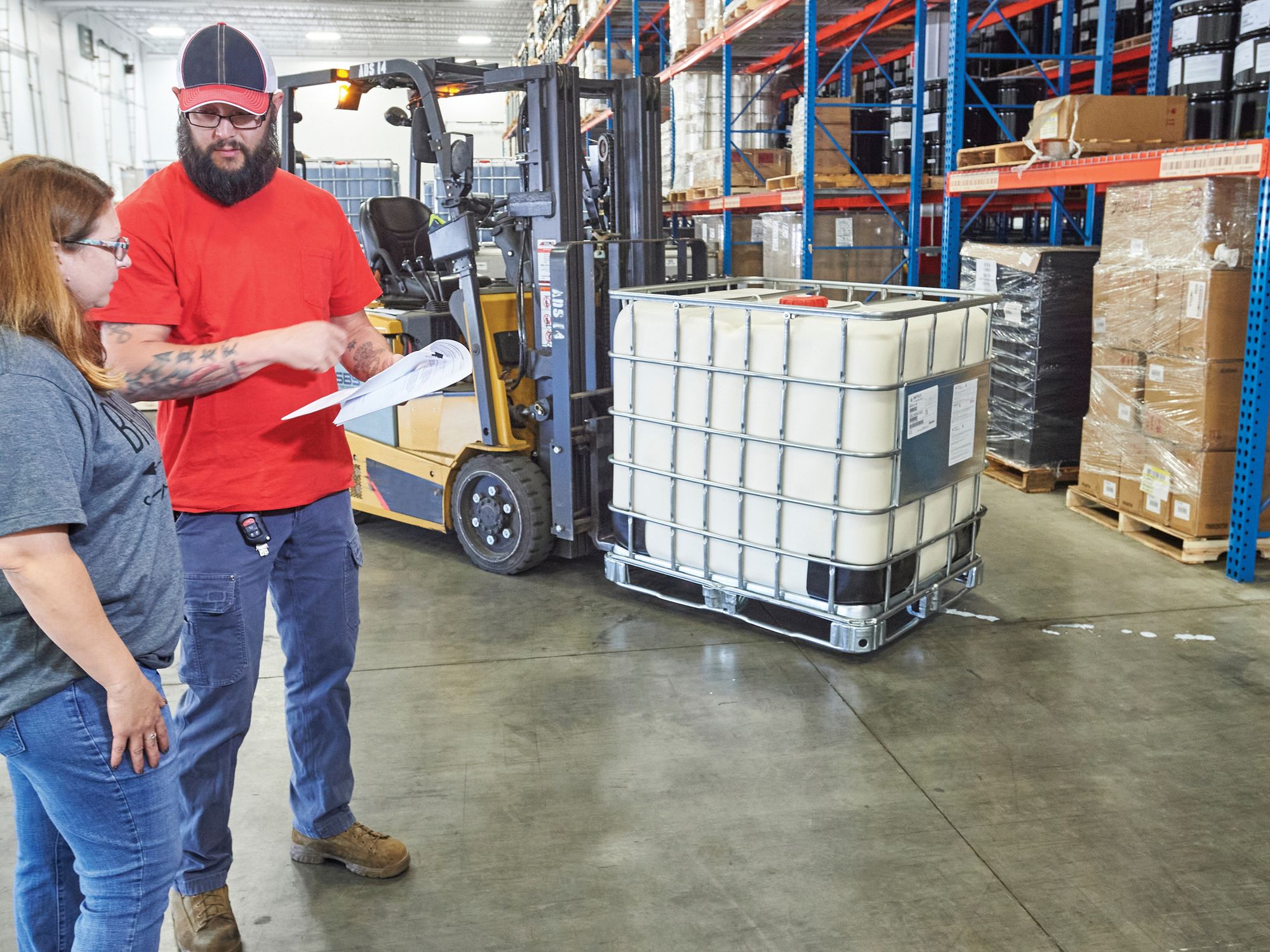Secondary containment and hazardous waste portable containers

- Secondary containment is not a requirement for hazardous waste generators unless they are a permitted hazardous TSDF.
- Spilled or leaked waste and accumulated precipitation must be removed from the sump or collection area as soon as possible to prevent overflow.
Secondary containment is not a requirement for hazardous waste generators unless they are a permitted hazardous waste treatment, storage, or disposal facility (TSDF). However, secondary containment is a best practice for anyone who manages hazardous wastes — particularly if the facility stores those wastes outside. This secondary containment can range from a curbed area to a concrete pad to a specially designed pallet.
Secondary containment is not required for storage areas that store containers holding only wastes that do not contain free liquids unless the wastes carry the following codes: FO20, FO21, FO22, FO23, FO26, and FO27.
Note that certain states may require secondary containment. In addition, state and local clean water rules may require a facility to provide secondary containment for wastes stored outside.
Containment systems
The regulations covering portable hazardous waste containers at 264.175(b) – (c) refer to secondary containment systems as “containment systems.”
The containment system must be designed and operated to:
- Contain liquids. There must be a base under the containers that is free of cracks or gaps and is sufficiently impervious to contain leaks, spills, and accumulated precipitation until the collected material is detected and removed.
- Keep containers from contacting any leaked liquids. The containment system must be designed to drain and remove liquids (e.g., a sloped base). Or the containers may be elevated or otherwise protected from contact with accumulated liquids.
- Have sufficient capacity to contain 10 percent of the volume of the total containers stored, or the volume of the largest container (whichever is greater).
A company must prevent precipitation (or “run-on”) into the containment system unless the company has enough capacity to contain it. While not specified in the regulations, a good rule of thumb is that containment systems be able to hold the additional precipitation from a 25-year storm lasting 24 hours. Also, it’s important to ensure any valves or drains are kept closed.
Even if the company does not store waste outside, if the company has an automated sprinkler system, many state fire codes require the company to have enough containment to handle the additional volume of the sprinkler system operating for a specific amount of time (e.g., 20 minutes).
Spilled or leaked waste and accumulated precipitation must be removed from the sump or collection area as soon as possible to prevent overflow.
The federal regulations prohibit the mixing of incompatible wastes. So it’s a good idea to place incompatible wastes in separate containment systems.
